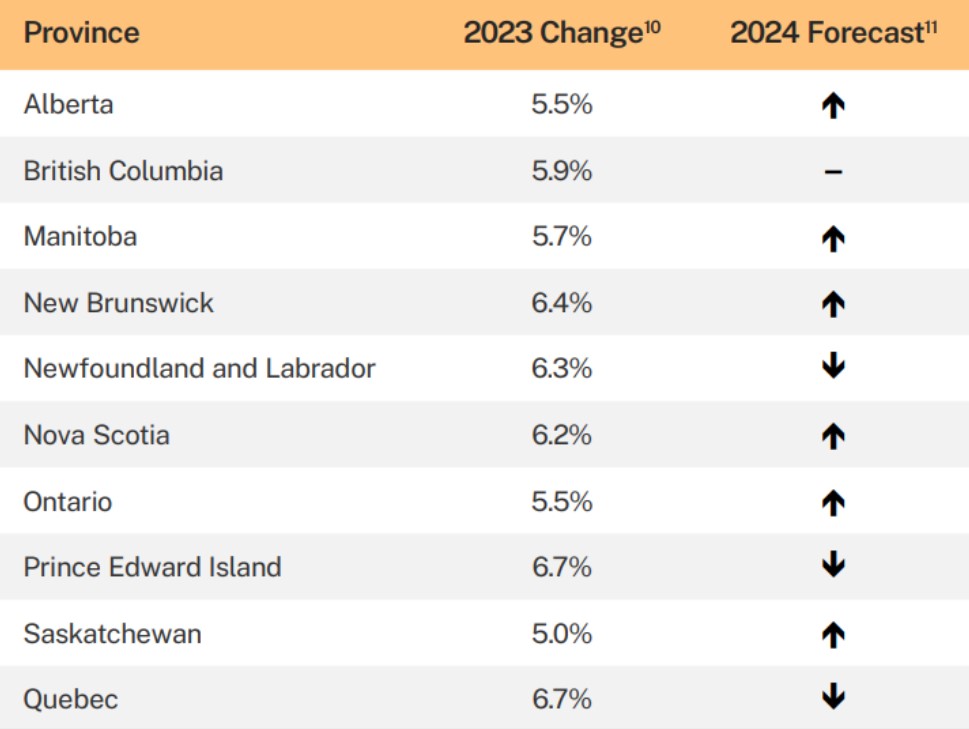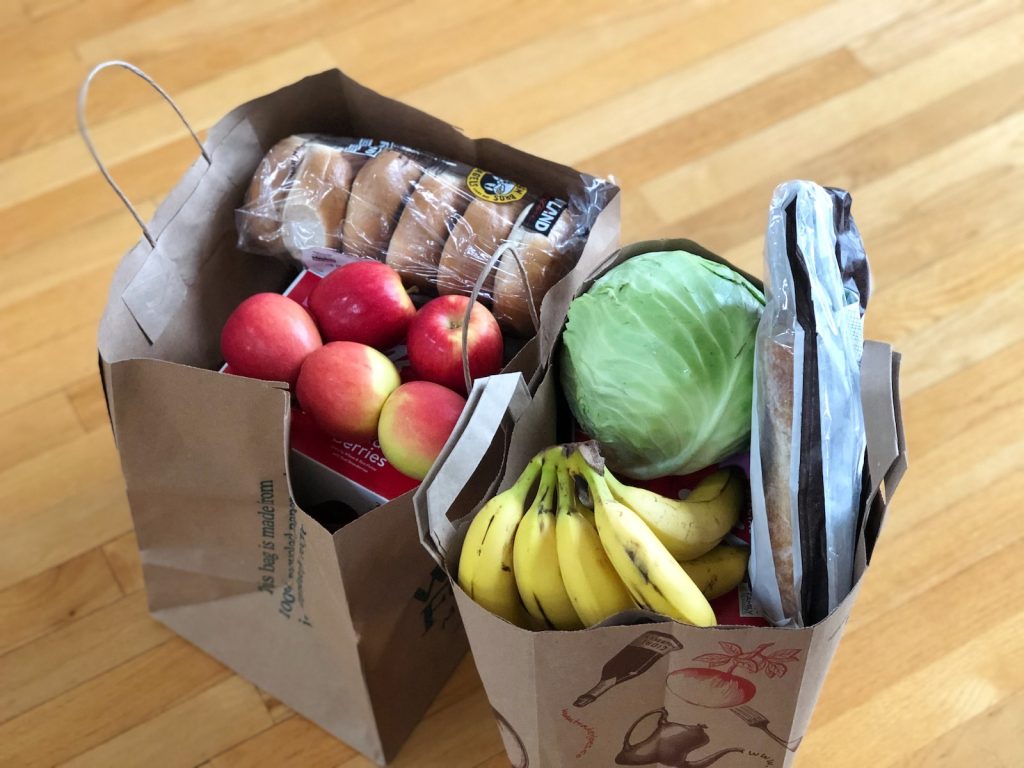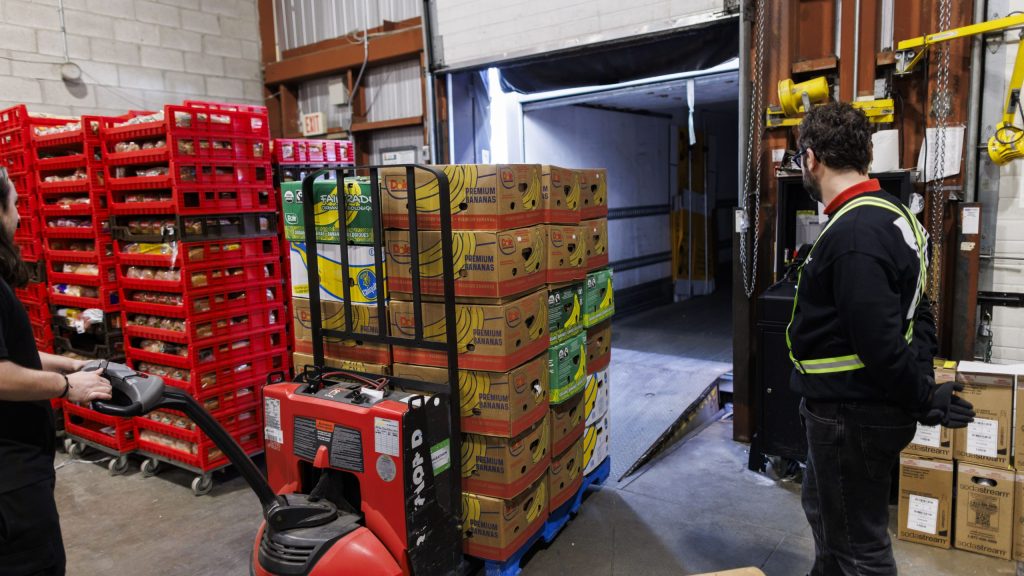‘Not as dire’: Canada’s 2024 food price report released. Here’s what experts are forecasting
Posted Dec 7, 2023 07:11:40 AM.
Last Updated Dec 10, 2023 10:11:01 PM.
The 14th annual food price report was released on Thursday with a focus on how Canadians are spending less despite inflation, either by reducing the quantity or quality of food, or by substituting less expensive alternatives.
In all, Canada’s 2024 Food Price Report predicts an increase of 2.5 to 4.5 per cent in overall food costs in the new year, with a rise across the board.
Sylvain Charlebois, professor and director of the Agri-Food Analytics Lab at Dalhousie University, says that in 2023, all sections of the grocery sector were impacted by inflation. Charlebois says they expect a “soft landing,” with inflation expected to cool for the new year.
“We’re expecting some price wars. Things are tightening up right now for grocers and suppliers,” Charlebois told CityNews. “We’re expecting an inflation rate of 2.5 per cent to 4.5 per cent … but we wouldn’t be surprised if it falls below that threshold.”
Charlebois says that while Canadians vilify inflation in general, it’s something this sector needs.
“We need [inflation] for investments, you need it to increase competition, and you need it to get companies to innovate and make sure that our food is safe,” he said.
“The challenge we have had over the last couple of years is that the rate has been much too high for far too long. We wouldn’t be surprised that in 2024, we go back to that proverbial sweet spot.”
2024 Canadian food prices table
- Bakery: 5% to 7%
- Dairy: 1% to 3%
- Fruit: 1% to 3%
- Meat: 5% to 7%
- Other: 2% to 4%
- Restaurants: 3% to 5%
- Seafood: 3% to 5%
- Vegetables: 5% to 7%
Provincial breakdown of food prices

According to the report, retail food sales data indicates a decline from a monthly expenditure of $261.24 per capita in August 2022 to a monthly expenditure of $252.89 per capita in August 2023.
The rise in prices can be attributed to various factors, including climate events that have had adverse effects on harvests, such as wildfires and flooding throughout the country.
Coffee, flour, vegetables and meat: Food items that will cost more or less
Charlebois said consumers should feel better about the costs of certain food products. He mentions coffee, flour, wheat and dry pasta as some to look out for in terms of lower prices.
“Even dairy. We got some good news in the fall from the commission. Farm prices will go up by 1.7 per cent to 2 per cent, which is quite reasonable, to be honest. We’re not expecting major jumps in the dairy section at all.”
Charlebois says the meat section will be problematic in terms of high costs, as well as the costs of vegetables and the bakery sector.

“The vegetable play is about the dollar. It’s been a story for about two or three years now. Because of the interest rate and a potential recession, we may see the dollar weaken … That is going to impact the purchasing power of importers,” Charlebois said.
“In the meat section, beef is going to increase because of droughts in the U.S. and Canada. Poultry is going to increase because of the Avian Flu. Pork got cheap this year, so we have fewer farmers farming hogs. There is less supply … eventually, we are expecting more prices to increase over the next little while.”
As for whether Charlebois thinks this is good news for Canadians, he mentioned that the latest report indicates that it won’t be as alarming in 2024 as in years past.
“If you’re looking at prices to drop, you won’t celebrate. What this report is telling Canadians is that things are not as dire as in 2023 or even in 2022,” Charlebois said.
“I think that the worst is behind us, which is good news … I don’t know if consumers want deflation or if they understand what it means. It would mean companies would divest, and prices would skyrocket again. You don’t want prices to drop in the food industry, but you want deals … that didn’t happen in the last couple of years.”
Managing food costs vs. the costs of living
Another indication of how the cost of living is impacting how residents spend on food, the report shows Canadians are facing additional pressures, including higher costs for rent and utilities and rising personal debt.
“Based on the 2023 predictions, the total annual expenditure for a family with the following demographic composition: man (aged 31-50), woman (aged 31-50), boy (aged 14-18), and girl (aged 9-13), was originally projected to be $16,288.40, based on what we considered to be a healthy diet,” the report states.

“This year, in recognition of the reduced spending habits of Canadians, a more accurate estimate for the annual spending of a family of four in the past year is $15,595.40.4. In other words, they spent $693 less due to changes in shopping habits, despite higher food prices.”
Experts say Canadians will continue to experience the strain of food inflation in 2024, compounded by increasing costs of housing, energy, and various other expenditures.
Further, Canada’s 2024 Food Price Report indicates that the new year may witness a “mild deflationary trend,” resulting in lower prices for numerous essential food items.
Corporate behaviour and the profits of major grocers
Canadians are trading down and going to discount stores, but also eating more at home to try and save money, which benefits the grocers.
Major Canadian grocers, such as Loblaw, have been under pressure to stabilize Canadian food prices. The federal government has called on them to provide detailed plans to address rising food costs through discounts, promotions and other measures.
The 2024 report mentions the prevalent issue of food affordability and how it has remained a top concern as prices
continued to rise throughout the year.
“There were widespread concerns about corporate behaviour, with allegations of profiteering by Canada’s major grocery chains frequently reported in the media and the subject of government attention,” the report states.
“A significant 30.3 per cent of Canadians believed that price gouging was the primary reason for the escalating food prices.”
Canada’s Food Price Report of 2024 is an annual publication collaboratively produced by Dalhousie University, the University of Guelph, the University of British Columbia, and the University of Saskatchewan.










